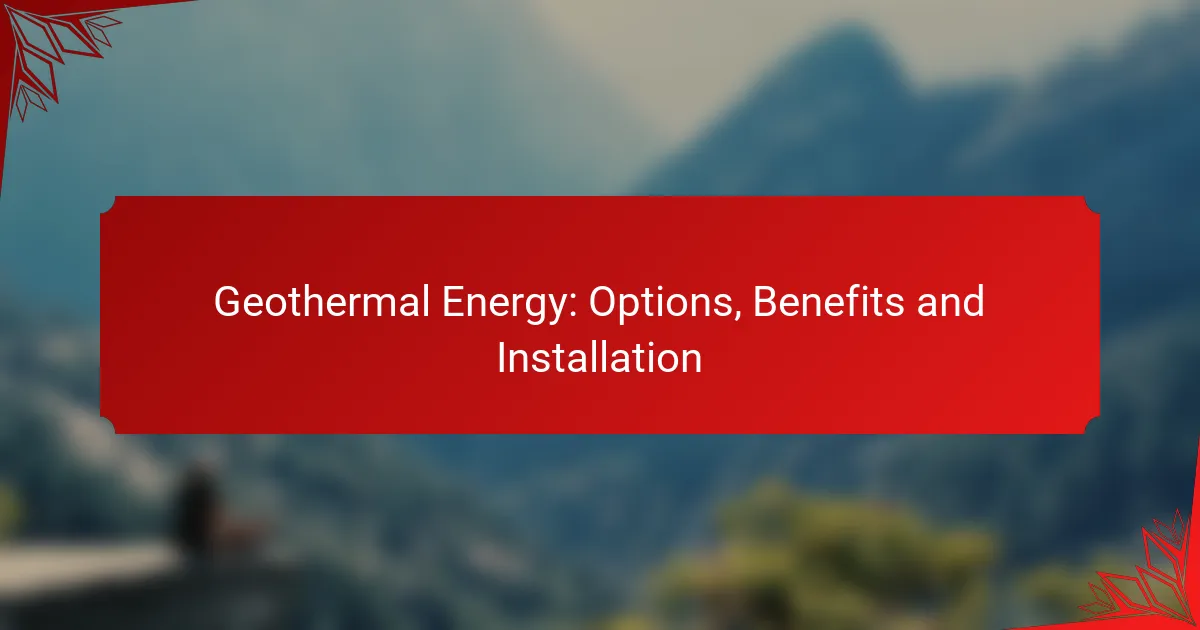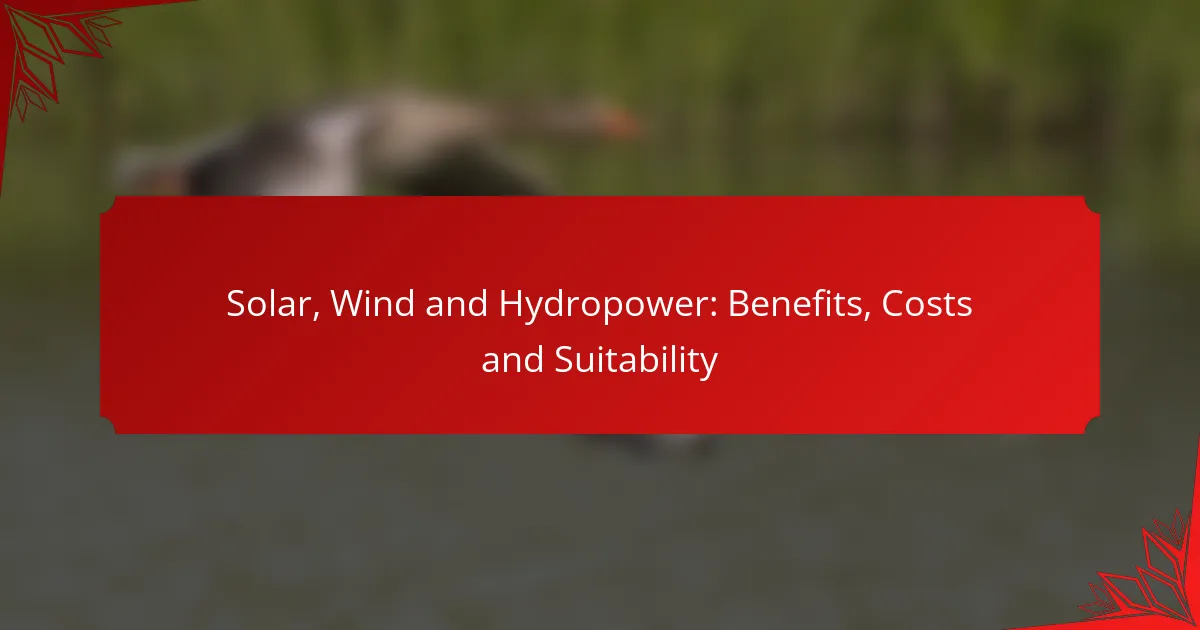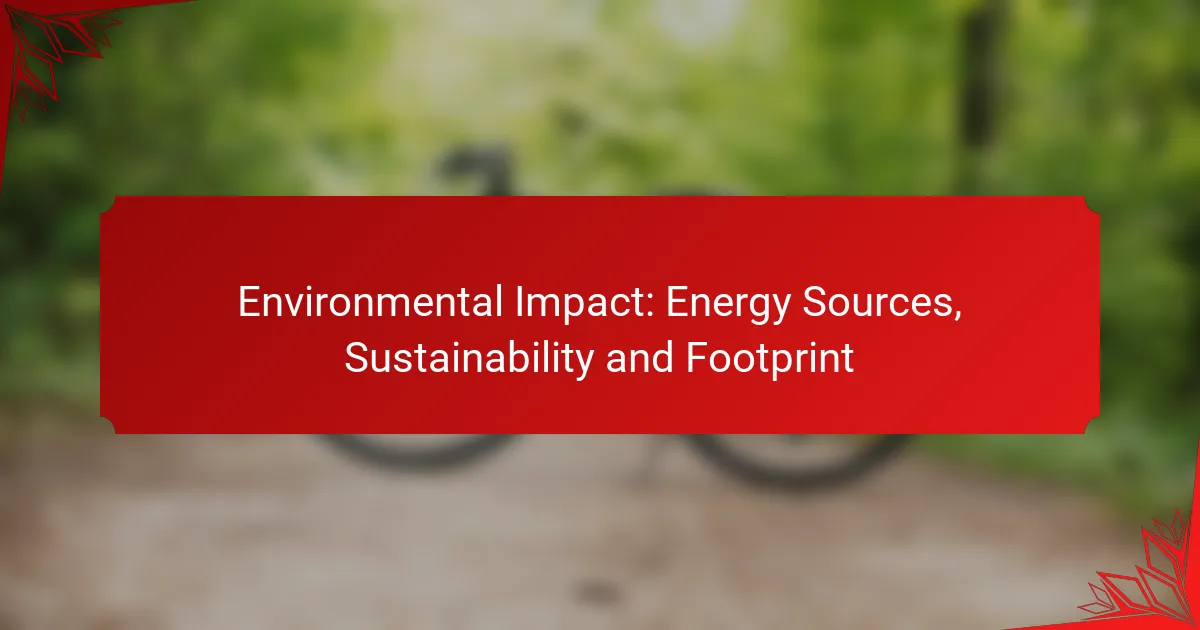Geothermal energy presents a range of options tailored to various applications, from residential heating to large-scale power generation. With benefits such as cost savings, environmental sustainability, and low maintenance, it stands out as a compelling energy solution. Installing geothermal systems involves a series of essential steps, necessitating professional expertise for optimal performance and integration.
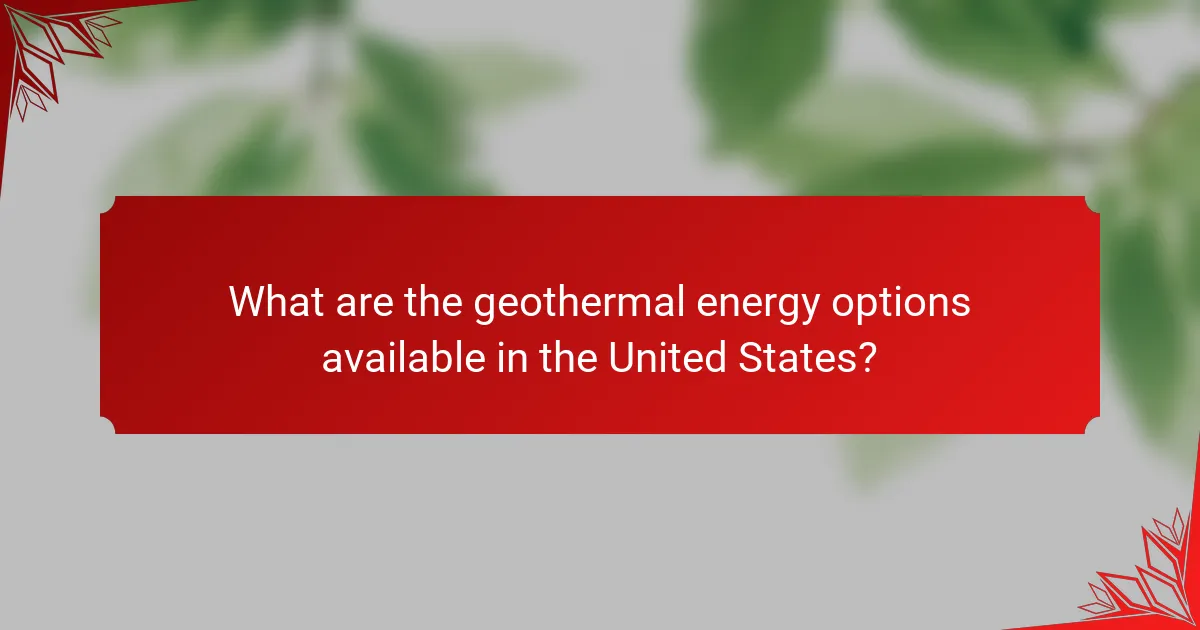
What are the geothermal energy options available in the United States?
The United States offers several geothermal energy options, each suited for different applications and locations. These options include ground source heat pumps, direct use systems, geothermal power plants, hybrid systems, and enhanced geothermal systems.
Ground source heat pumps
Ground source heat pumps (GSHPs) utilize the stable temperature of the earth to heat and cool buildings. They work by transferring heat to or from the ground using a series of buried pipes filled with fluid.
GSHPs are highly efficient, often achieving efficiency ratings of 300-600%, meaning they can produce three to six units of heat for every unit of electricity consumed. They are suitable for residential and commercial buildings, particularly in regions with moderate climates.
Direct use systems
Direct use systems harness geothermal energy directly from hot water sources for heating applications. These systems can be used for district heating, greenhouse heating, or even drying agricultural products.
Typically, direct use systems operate at temperatures ranging from 50°C to 150°C. They are most effective in areas with accessible geothermal resources, such as the western United States, where hot springs and geothermal reservoirs are prevalent.
Geothermal power plants
Geothermal power plants convert geothermal energy into electricity, primarily using steam or hot water from the earth. There are three main types: dry steam, flash steam, and binary cycle power plants.
Dry steam plants use steam directly from geothermal reservoirs, while flash steam plants convert high-pressure hot water to steam. Binary cycle plants transfer heat from geothermal water to a secondary fluid with a lower boiling point. These plants are typically located in regions with high geothermal activity, such as California and Nevada.
Hybrid systems
Hybrid systems combine geothermal energy with other renewable sources, such as solar or wind, to enhance overall efficiency and reliability. These systems can optimize energy production by utilizing the strengths of each energy source.
For instance, a hybrid system might use solar panels to generate electricity during sunny days while relying on geothermal energy for heating or cooling. This approach can reduce reliance on fossil fuels and lower energy costs in the long run.
Enhanced geothermal systems
Enhanced geothermal systems (EGS) involve creating artificial reservoirs in hot, dry rock formations by injecting water to generate steam. This technology expands the potential for geothermal energy beyond traditional hotspots.
EGS can be developed in various locations, making it a promising option for regions without natural geothermal resources. However, it requires significant investment and careful management to ensure environmental safety and efficiency.
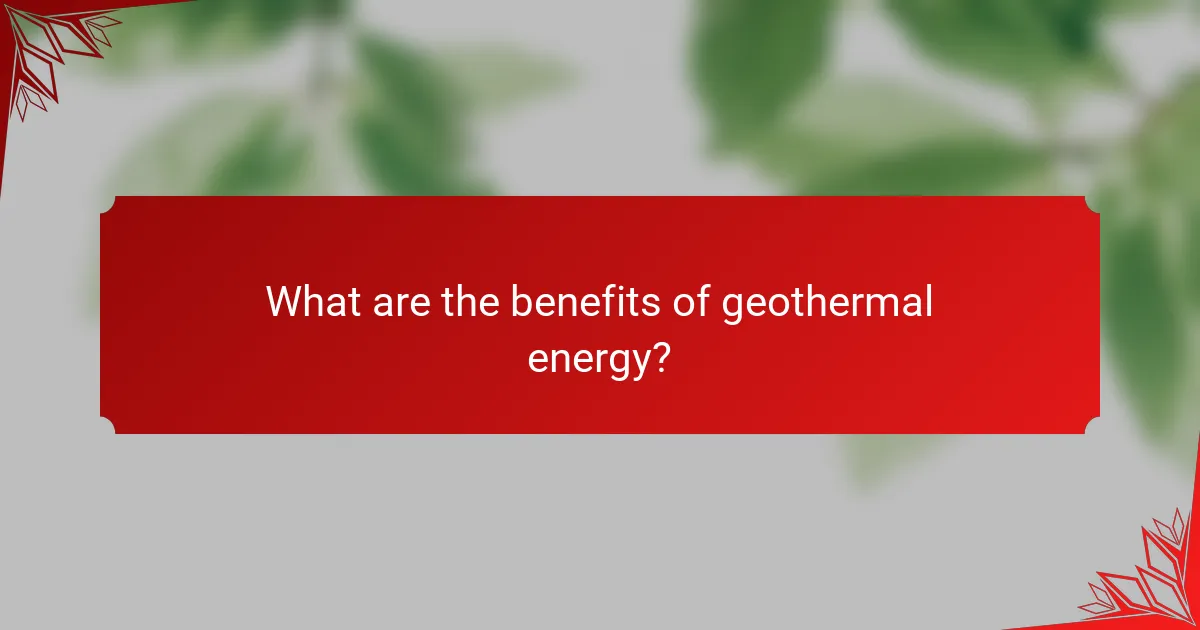
What are the benefits of geothermal energy?
Geothermal energy offers numerous advantages, including significant cost savings, environmental sustainability, low maintenance needs, and enhanced energy independence. These benefits make it an attractive option for both residential and commercial energy solutions.
Cost savings on energy bills
Utilizing geothermal energy can lead to substantial reductions in energy bills. Homeowners can expect savings of 30-60% on heating and cooling costs compared to traditional systems. The initial investment in geothermal systems is often offset by these long-term savings.
Additionally, many regions offer incentives or rebates for installing geothermal systems, which can further decrease upfront costs. It’s essential to research local programs to maximize financial benefits.
Environmental sustainability
Geothermal energy is a clean and renewable resource, contributing to lower greenhouse gas emissions. By harnessing the Earth’s natural heat, geothermal systems reduce reliance on fossil fuels, which helps combat climate change.
Moreover, geothermal installations have a small land footprint and can coexist with agricultural activities, making them a sustainable choice for energy production. This dual-use potential enhances land efficiency while providing clean energy.
Low maintenance requirements
Geothermal systems are known for their durability and low maintenance needs. Once installed, these systems typically require minimal upkeep, with most components lasting 20-25 years or more. Regular maintenance can be as simple as changing filters and checking fluid levels.
This reliability translates into fewer service calls and lower maintenance costs over time, making geothermal systems a practical choice for homeowners seeking hassle-free energy solutions.
Energy independence
Geothermal energy contributes to energy independence by reducing reliance on imported fuels. By tapping into local geothermal resources, communities can generate their own energy, enhancing energy security and stability.
This independence is particularly valuable in regions with fluctuating energy prices or supply disruptions. Investing in geothermal technology can help stabilize energy costs and provide a consistent energy source for years to come.
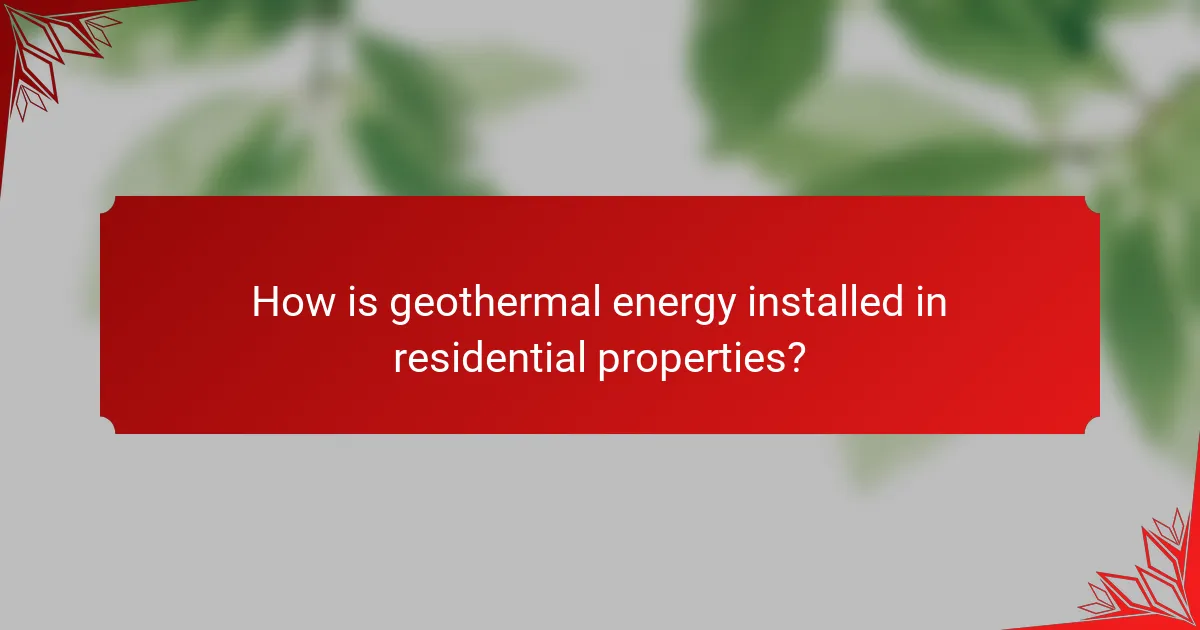
How is geothermal energy installed in residential properties?
Geothermal energy installation in residential properties involves several key steps, from site assessment to system integration. This process typically requires professional expertise to ensure efficient and effective setup.
Site assessment and planning
The first step in installing a geothermal system is conducting a thorough site assessment. This includes evaluating the land’s geology, soil composition, and existing infrastructure to determine the best system type and layout.
During planning, homeowners should consider the system’s size, energy needs, and local regulations. Engaging with a qualified geothermal contractor can help navigate these factors effectively.
Drilling and excavation
Once planning is complete, drilling and excavation begin. For horizontal systems, trenches are dug to lay the ground loops, while vertical systems require boreholes drilled deep into the earth.
The depth of these boreholes can vary but typically ranges from 100 to 400 feet, depending on the geothermal resource available. Proper execution is crucial to avoid damaging the surrounding environment.
System installation
After excavation, the geothermal heat pump and ground loops are installed. The heat pump is connected to the loops, which circulate a fluid to transfer heat between the ground and the home.
Installation must adhere to local building codes and manufacturer specifications to ensure optimal performance. It’s essential to verify that all components are correctly fitted and sealed to prevent leaks.
Connection to existing systems
The final step involves connecting the geothermal system to the home’s existing heating and cooling systems. This may require modifications to ductwork or the installation of new distribution systems.
Homeowners should ensure that the integration is seamless to maximize energy efficiency. Regular maintenance checks after installation can help maintain system performance and longevity.
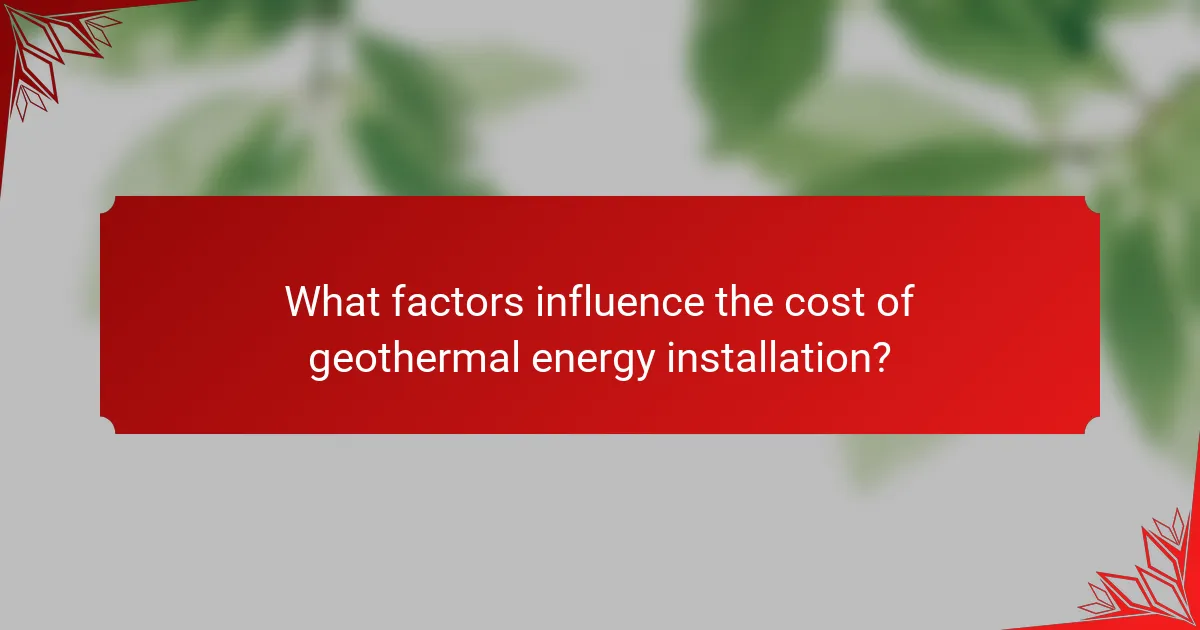
What factors influence the cost of geothermal energy installation?
The cost of geothermal energy installation is influenced by several key factors, including the type and size of the system, geological conditions, local labor rates, and permitting requirements. Understanding these elements can help in estimating the overall investment needed for a geothermal project.
System type and size
The type and size of the geothermal system significantly impact installation costs. For instance, closed-loop systems tend to be less expensive than open-loop systems, but the choice depends on site-specific conditions. Additionally, larger systems generally have a lower cost per unit of energy produced, making them more economical for larger properties.
When considering system size, it’s essential to evaluate the heating and cooling needs of the building to ensure optimal performance. A properly sized system can lead to better efficiency and lower long-term operational costs.
Geological conditions
Geological conditions play a crucial role in determining installation costs. Areas with favorable geology, such as high thermal conductivity and accessible groundwater, can lower drilling and installation expenses. Conversely, rocky or unstable ground can increase costs due to the need for specialized equipment and techniques.
Before installation, conducting a geological survey can provide insights into the subsurface conditions, helping to avoid unexpected expenses during the drilling process. Understanding the local geology can also inform the choice of system type.
Local labor rates
Local labor rates can vary significantly and directly affect the overall cost of geothermal installation. Regions with higher labor costs may see increased installation expenses, while areas with a competitive labor market may offer more affordable options. It’s advisable to obtain multiple quotes from local contractors to compare labor costs effectively.
Additionally, the availability of skilled labor in geothermal technology can impact project timelines and costs. Ensuring that the chosen contractor has experience with geothermal systems can lead to a smoother installation process.
Permitting and regulations
Permitting and regulatory requirements can influence the cost and timeline of geothermal energy installation. Different regions have varying regulations regarding geothermal systems, which may include environmental assessments, zoning approvals, and building permits. Understanding these requirements early in the planning process can help avoid delays and additional costs.
It’s beneficial to consult with local authorities or a knowledgeable contractor to navigate the permitting landscape effectively. This proactive approach can streamline the installation process and ensure compliance with all necessary regulations.
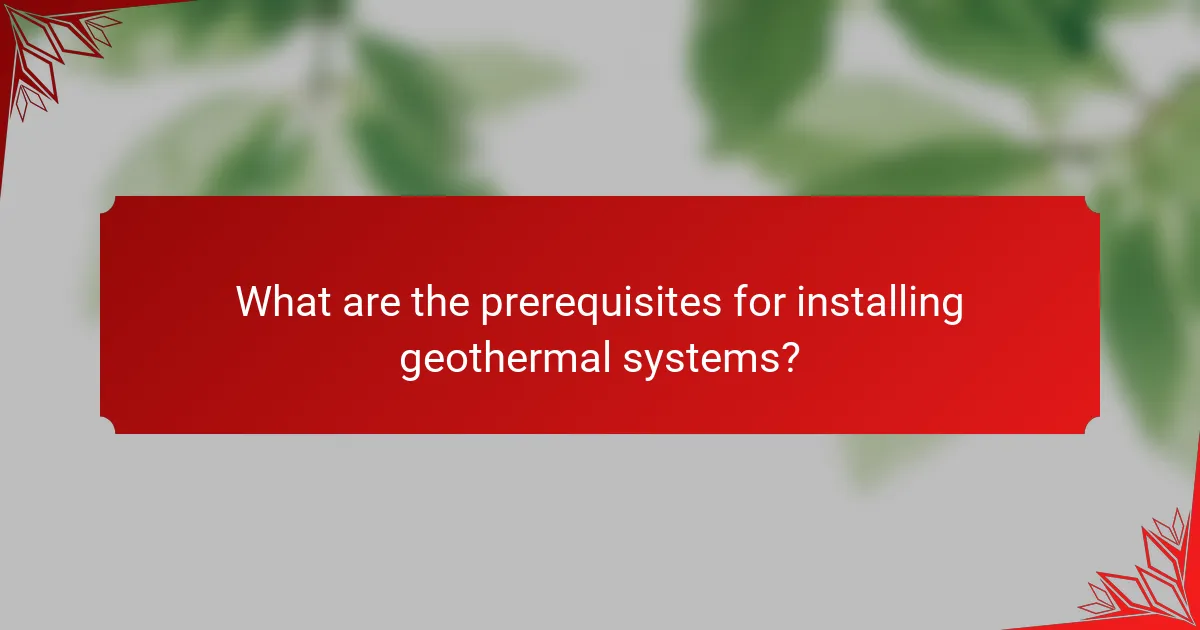
What are the prerequisites for installing geothermal systems?
Installing geothermal systems requires specific conditions and considerations to ensure efficiency and effectiveness. Key prerequisites include suitable land, access to groundwater, and compliance with local regulations.
Site Assessment
A thorough site assessment is crucial before installing a geothermal system. This involves evaluating soil conditions, land size, and the proximity of existing structures. Ideally, the land should have sufficient space for horizontal loops or deep drilling for vertical systems.
Soil type significantly impacts the efficiency of geothermal systems. Sandy or loamy soils are preferable as they facilitate better heat transfer compared to clay or rocky soils. Engaging a professional for this assessment can help identify the best configuration for your specific site.
Permits and Regulations
Before installation, obtaining the necessary permits and understanding local regulations is essential. Many regions require specific permits for drilling or excavation, especially if groundwater is involved. Check with local authorities to ensure compliance.
Familiarize yourself with any incentives or rebates available for geothermal installations in your area. Some regions offer financial assistance to encourage renewable energy adoption, which can significantly offset installation costs.
System Design
Choosing the right system design is vital for optimal performance. Options include closed-loop systems, which circulate fluid through underground pipes, and open-loop systems, which use groundwater directly. The choice depends on site conditions and energy needs.
Consulting with a geothermal specialist can help tailor the system to your specific requirements. They can provide insights on sizing, loop configuration, and energy efficiency, ensuring the system meets your heating and cooling demands effectively.
